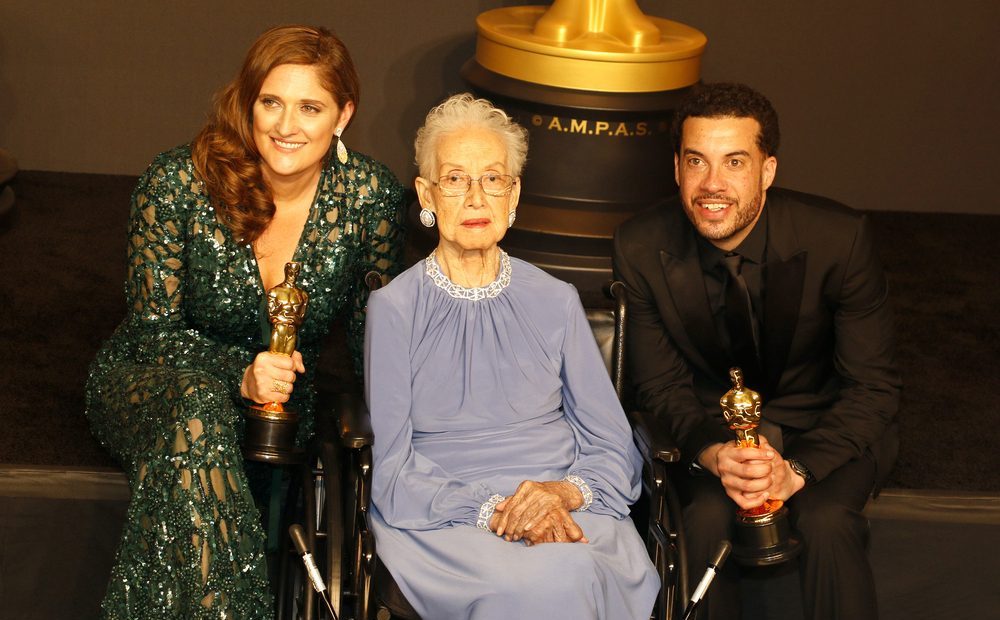On Sept. 18, a historic moment unfolded as a group of Black female scientists and mathematicians — known as NASA’s “Hidden Figures” — were awarded Congressional Gold Medals. Katherine Johnson, Mary Jackson, Dorothy Vaughan, Christine Darden and the other women who comprised that august group were honored for their critical contributions to the U.S. space program — a legacy that paved the way for future generations in science and technology, including cultural icons like Nichelle Nichols and Dr. Mae Jemison.
Recognizing the “Hidden Figures”
The Congressional Gold Medal is the highest civilian award in the United States, recognizing extraordinary achievements. The honor for Johnson, Jackson, Vaughn and Darden comes at a time when their contributions — long overlooked — are finally receiving the recognition they deserve. Their critical work — especially during the space race, which was part of the “Cold War” with the then-Soviet Union, now Russia — was instrumental in the success of NASA missions, including the Apollo 11 moon landing.
“They made it possible for Earthlings to lift beyond the bounds of Earth, and for generations of trailblazers to follow,” NASA Administrator Bill Nelson remarked at a ceremony at NASA’s Langley Research Center in Virginia, Salon reported. As the award ceremony took place, the families of Johnson, Jackson and Vaughan accepted the medals posthumously. Darden, another honoree, participated remotely as her family received the honor on her behalf.
The journey to recognition
The Hidden Figures Congressional Gold Medal Act, introduced in 2019, allowed Congress to honor these women, whose calculations and innovations were crucial to NASA’s success. Jackson became NASA’s first Black female engineer in 1958, while Vaughan became the first Black female supervisor at NASA’s predecessor in 1949. Their stories gained wider recognition through Margot Lee Shetterly’s book Hidden Figures, which was later adapted into an award-winning film, further solidifying their place in history.
The legacy of “Star Trek” and representation in space exploration
Nichols, who portrayed Lieutenant Uhura in the original “Star Trek” series, played a pivotal role in breaking racial barriers in the entertainment industry and beyond. Her groundbreaking character on the 1960s TV series was one of the first prominent depictions of a Black woman in a position of authority and intellect. Nichols’ role was much more than just science fiction. Her portrayal of Uhura inspired countless individuals, including NASA’s recruitment efforts for women and minorities, where she served as an ambassador.
Her influence extended to Dr. Mae Jemison, the first Black female astronaut, who credited Nichols as a major inspiration. Jemison herself made history not only in space but in popular culture by appearing on “Star Trek: The Next Generation.” This intersection of fiction and reality underscores the lasting impact of representation, showing how characters like Uhura encouraged real-life advancements in space exploration for Black women.
Barriers and breakthroughs
At a time when America was deeply segregated, these women shattered racial and gender barriers in a field that was dominated by white men. They were often seen as “hidden,” working behind the scenes while the face of NASA’s success was mostly male and white. Yet, their brilliance in mathematics and engineering was undeniable, laying the groundwork for space missions that helped shape history.
The awarding of these medals also serves as a reminder of how Black women have been historically overlooked in both science and popular culture. Nichols’ role as Uhura and Jemison’s achievements as an astronaut and Star Trek guest star highlight the connection between real-world barriers being broken and their representation on screen.
Black women: To the stars and far beyond
The recognition of NASA’s “Hidden Figures” through Congressional Gold Medals — alongside the lasting legacy of Nichelle Nichols and Dr. Mae Jemison — showcases the profound impact Black women have had on space exploration, both in fiction and reality. Their stories, from behind the scenes at NASA to the screens of Star Trek, inspire future generations of scientists, engineers and dreamers, while challenging the ongoing need for diversity and representation in STEM fields.












